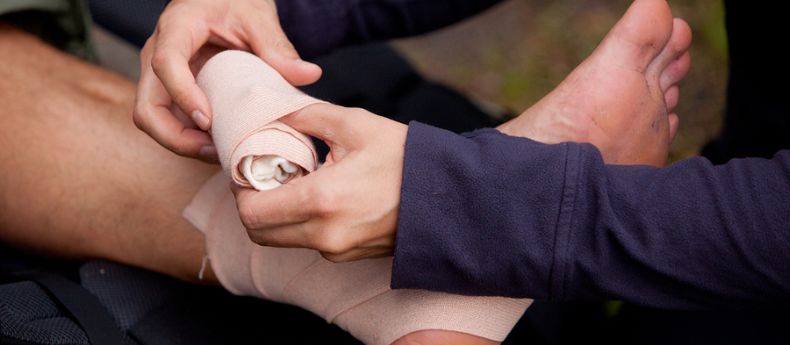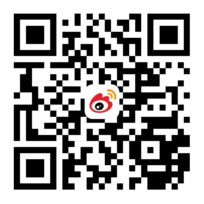
First Aid Basics
As careful as we try to be, accidents happen. Everyone gets a few scratches and bruises. Are you and your family prepared to deliver first aid if necessary? Depending on where you are when an emergency occurs, it could take a few minutes to several hours to get medical attention. Therefore it is critical for everyone to know some basic yet vital information about first aid for common injuries and minor accidents.
Sprains and strains
The most common injuries that I encounter in my family medicine practice are sprains and strains. This often happens in situations like when people slip on an icy patch outside and use their wrist to catch their fall or have ankle pain from landing awkwardly on a foot while jumping over a rain puddle. Sprains and strains generally cause swelling and pain, and there may be bruises around the injured area.
Best first aid practices for sprains and strains include following RICE guidelines. RICE stands for:
- R for resting the injured part of the body.
- Apply Ice packs or cold compresses to the affected area for 10 to 15 minutes at a time every few hours for the first one to two days to prevent swelling.
- Apply an elastic Compress bandage or a tight wrap that covers the injured area completely for at least two days to reduce swelling.
- Elevate the injured body part.
You don’t need to see a doctor for most sprains and strains. I usually recommend a simple pain reliever such as acetaminophen (paracetamol) or ibuprofen for the first few days of the injury. It is sometimes difficult to tell the difference between a sprain and a fracture (broken bones). An X-ray can determine whether a bone is broken. If you are unsure, or if the pain gets worse after a day or two, see your doctor. United Family Healthcare (UFH) hospitals have Emergency Rooms and urgent care facilities that you can turn to for serious injuries.
Cuts and scrapes
Cuts and scrapes, while painful, are also very common. If the cut does not go all the way through the skin, it does not need stitches. If you are not sure, check with your doctor. For small and superficial cuts, follow these basic first aid guidelines:
- Clean the cut by washing it well with soap and water. If there is dirt, glass, or anything in the cut that you can’t get out after you wash it, see your doctor.
- Stop any bleeding by pressing a clean cloth or bandage firmly on the area for 20 minutes. Elevate the cut above your heart if possible to slow down the bleeding. If the bleeding does not stop after 20 minutes, see your doctor.
- Put a thin layer of antiseptic or antibiotic ointment on the cut or scrape.
- Cover the cut or scrape with a bandage or gauze, keeping the bandage clean and dry. Change the bandage one or two times every day until the cut or scrape heals.
- Watch for signs of infection, which are fever, redness, swelling, warmth, increasing pain, pus, or red streaks around the cut area. See a doctor if these occur.
Most cuts and scrapes heal on their own within 7-10 days. As the cut or scrape heals and forms a scab, be sure to leave the scab alone and not pick at it. You may need a tetanus vaccination if your last tetanus shot was more than 5 years ago or if the wound is dirty or deep. Doctors at UFH can evaluate a wound and determine whether any vaccinations or further treatments are necessary.
Animal bites
Management of animal bites in Mainland China can be quite different than in many other countries, as China is second only to India for the highest rate of rabies infections (China Daily, September 28, 2009). Once rabies symptoms occur, the condition is nearly always fatal. As a result, early management of animal bites to prevent the onset of rabies symptoms is essential in Mainland China.
If you get bitten by an animal, wash the wound with lots of soap and water – even if it stings. You can put antiseptic cream on the wound and cover it with a bandage. If you are bleeding, apply pressure to the wound. It is important to see a doctor immediately after being bitten, even if you have received your rabies vaccinations. Also, make sure that your pets are vaccinated against rabies. UFH recommends that all our patients get vaccinated against rabies while living in Mainland China.
Burns
You can get burned by heat, fire, radiation, sunlight, electricity, chemicals or hot water. First aid for a small, superficial scald:
- Hold the burned area under cold running water for at least five minutes.
- Remove jewelry and clothing from the burned area unless it is stuck to the burn.
- Treat the burn with a skin care product that protects and heals skin, such as aloe vera cream or antiseptic ointment. Cover the burn with a non-adhesive bandage.
- Take an over-the-counter pain reliever, such as acetaminophen or ibuprofen, if pain becomes an issue.
See a doctor immediately if:
- The burn is deep, even if you do not feel any pain.
- The burn is larger than 2-3 inches (5-8 cm).
- The burn was from a fire, an electrical wire or socket, or chemicals.
- The burn is on the face, scalp, hands, joints, or genitals.
- The burn looks infected (i.e. you see swelling, pus or increasing redness).
- You are unsure of the severity of the burn.
There are other emergency conditions that usually require immediate medical attention, such as anaphylaxis (a serious allergic reaction), near-drowning, smoke inhalation and unconsciousness. I recommend to all my patients that they, and their families, learn cardiopulmonary resuscitation (CPR) and first aid for emergency situations. Knowing CPR can make a life-saving difference while you are waiting for an ambulance to arrive. It is always a good idea to take a CPR course and make sure that you have first aid kits at home just in case because, as we all know, accidents happen!
Resources:
http://familydoctor.org/familydoctor/en/prevention-wellness/staying-healthy/first-aid.html
http://kidshealth.org/parent/firstaid_safe
Copyright United Family Healthcare 2014 All right reserved - 京卫网审[2014]第1927号 - 京ICP备13017554号-4




